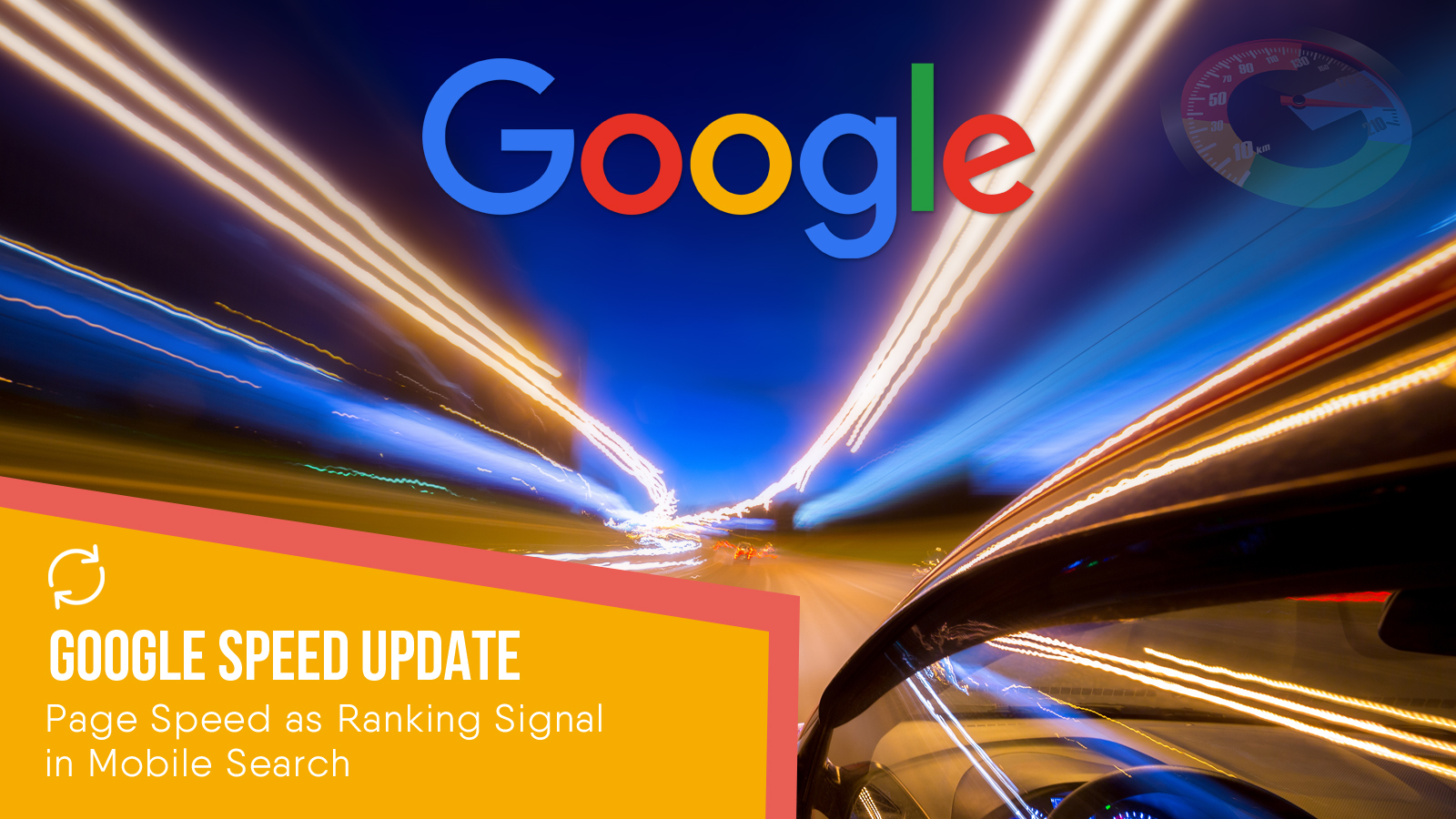 As per the Google’s Mobilegeddon Update, commonly known as Speed Update, its search algorithm would now include the website’s load time of mobile URLs. With this update, Google is again showing the importance it places on mobile web and user experience. Same standard is applied to all pages, regardless of the technology used to build the page. Google claimed that “People really care about the speed of a page” as the reason for considering a page’s load time in the mobile search ranking algorithm.
As per the Google’s Mobilegeddon Update, commonly known as Speed Update, its search algorithm would now include the website’s load time of mobile URLs. With this update, Google is again showing the importance it places on mobile web and user experience. Same standard is applied to all pages, regardless of the technology used to build the page. Google claimed that “People really care about the speed of a page” as the reason for considering a page’s load time in the mobile search ranking algorithm.
Speed has been a known factor in Google’s search algorithm since 2011, but this is the first time mobile searches have come into play.
Google ideally wants to see top ranking mobile pages loading in no more than 3 seconds, even with slower internet speed. On an average, pages ranking on the top 15 positions do load this quickly, with the competition being particularly stiff amongst the top 5 positions. Of course, the “load time” remains one of the several hundred ranking factors that Google considers for ranking. It emphasized the update should only negatively impact a small section of the search queries related to the websites that deliver slowest experience to the users. It will affect all businesses which gain traffic and revenue from organic mobile Google results.
Why speed is important for ranking?
This is because Google serves more mobile results than desktop ones. Slow loading webpages on faster smartphones impede mobile conversions and increase the barrier-to-entry. Slow web pages and weak connections further add to the woes, resulting in loss of speed. The average load-time of mobile web page is found to be a disappointing 15 seconds.
What is the take for you in Google’s Speed Update?
Google will still serve a slow page if it is very relevant to the query – but for the most competitive search term, you’ll need to be the fast to achieve top rankings. So, a website with slow pages can still achieve high ranking if its content is more relevant than the competitors. This means, the websites ranking 6 to 10 with faster loading pages could overtake slower loading URLs above them, provided they offer great, most relevant content.
It is worth noting that Google has said that Speed Update will only affect the slowest of mobile sites. It will only affect the websites that are noticeably slow on mobile phones. It means that if your site is already lightning fast and the competitor’s site is a few microseconds faster, it will hardly make a difference in the long run.
In 2017 itself, Google had begun to roll out its new mobile-first search index to some websites. Prior to this, Google had introduced its Accelerated Mobile Page (AMP) project with the aim to reduce the loading time for mobile webpages.
Transform mobile experience with speedier load time
There are many tools used by SEO company through which website’s loading speed on mobile and desktops can be easily tracked. The simplest way to do this is use Test My Site feature on Thinks with Google. Just enter your website’s URL and it will offer you free assessment of your website’s loading speed within a minute.
Google hasn’t officially released a specific benchmark to determine the pages delivering slowest experience. Developers can use the tools like Lighthouse, Chrome User Experience Report, PageSpeed Insights, WebPage Test and Pingdom to evaluate the load time and performance of web pages. Google is looking at the slowest pages out there, so if you care about the performance of your pages, these website pages shouldn’t be yours.
With Google taking a mobile-first approach, the Speed Update is meant to reinforce the same. It is designed to penalize the website owners whose excessive scripts and lazy coding are slowing down the mobile web, thus emphasizing the importance of digital transformation in optimizing mobile experiences. While it might seem like just another algorithmic inconvenience, the Google Speed Update offers you and opportunity to get ahead of your competitors.
Google’s shift to mobile-first indexing
Most people are now searching Google on mobiles that need to be delivered great mobile experience. To reflect this change, Google is switching its index to reflect how websites appear on mobiles, instead of desktop. This affects all websites, no matter how they serve mobile users. Google’s mobile-first indexing is though not linked to Speed Update, nevertheless, a well-designed mobile site is likely to benefit in terms of organic searches.
How to make your website load faster?
Here are some useful tips that will help your website rank faster.
Reduce your source code:
Remove unnecessary characters from our CSS, HTML and JavaScript to reduce the bytes they consume.
Image optimization:
For bitmap images such as photographs, use appropriate compression to avoid slow rendering. Limit color palettes on GIFs and PNGs, and use SVGs for vector images such as logos and graphics.
Server compression and caching:
Use gzip compression to significantly reduce the size of your webpage source code. Set longer expiry time on the files that don’t change often such as external images and scripts. This will have the browsers hold onto them longer before downloading again.
Time-to-Live (TTL) settings (Caching):
Set your snippet’s TTL to equal the average time your visitors spend on your site so that it is cached in the browser before it calls back to the CDN. This will cause the subsequent pages to load faster.
X event API:
Sending batches of event rather than one event at a time has been shown to reduce the load time by up to a second.
Enable HTTP/2 and HSTS:
The new HTTP/2 spec enables intelligent communication between servers and browsers and simultaneous downloading of key resources that results in reduced load times. Add on HSTS preloading to always download your webpages via HTTPS to prevent the slight delay of server-side redirects.
Split into multiple snippets:
Splitting your snippet into multiple snippets, such as category pages will have a positive impact on the website’s performance.
Accelerated Mobile Pages (AMP):
We recommend rebuilding your webpages with a pared-down selection of HTML tags, with no more than 50 KB of CSS and no custom JavaScript.
Optimize CSS and JavaScript delivery:
Inline critical CSS and scripts, and combine external files where possible to simplify browser rendering.
Improve server set-up:
Consider upgrading from shared to dedicated hosting if your customers experience slowdowns. Monitor RAM consumption, CPU status, uptime and temperature in case you manage your own server hardware.
Greatest impact on slowest loading pages
The Speed Update will have greatest impact on the slowest pages for well-searched, highly competitive keywords. When search intent, relevance and trust are equal, the page load speed will determine the top-ranked results.
Just as businesses need traffic from Google to succeed and thrive, Google needs businesses to maintain the user’s trust. Majority of the users will bounce from a web page that takes more than 3 seconds to load, and are less likely to purchase from it in the future. By directing mobile users to slow loading web pages, Google invariably becomes guilty by association. A 2012 study revealed that one-second increase in the load time would result in $1.6 billion reduction in the annual revenue of the ecommerce giant Amazon.
Keep the pace – prepare for speed boost of your website
If you’re worried about the impact of Google Speed Update on your business, then Flexsin can help. Invest today to make your website mobile and search engine friendly to secure your mobile visibility for now and into the future. For more information, contact us.


 Pankaj
Pankaj

